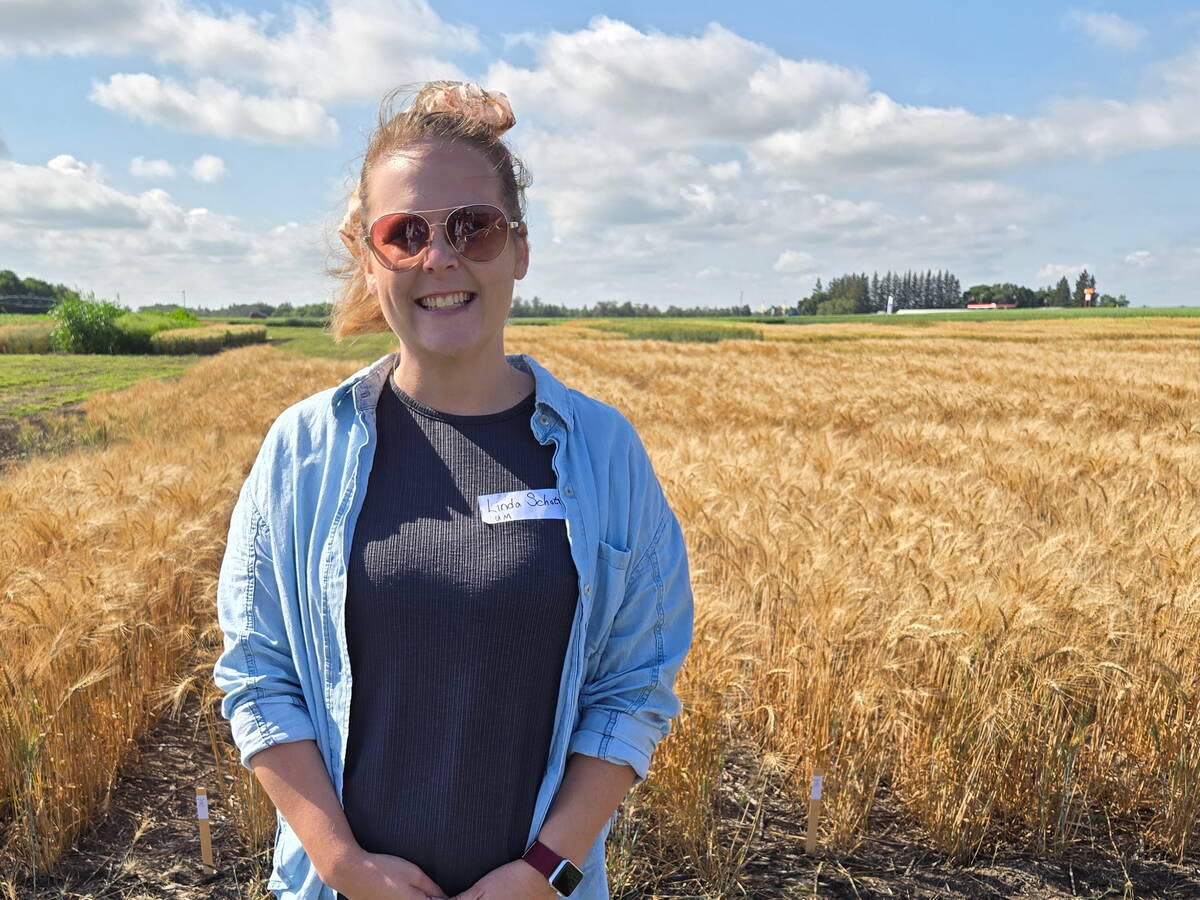LLOYDMINSTER, Alta. — John Bennett brought the house down when he accepted the Saskatchewan Soil Conservation Association’s award for individual farm conservationist here by commenting: “I’ve gone from idiot to innovator in seven years.”
That’s how long Bennett has been testing the tenets of no-till on his 1,000-acre farm south of Biggar, Sask.
The bearded farmer is a former schoolteacher who moved to Biggar from Bentley, Alta. He started farming 17 years ago.
The decision to switch to no-till farming came when a violent rainstorm caused enormous soil erosion on his hilly farm. It’s enough to experience that once in a lifetime, he said.
Read Also

University of Manitoba hires potato researcher
A new research chair position at the University of Manitoba will tackle sustainability in the potato industry.
So he turned to no-till, trying to blend conservation and traditional methods.
It wasn’t an all-out success, as Bennett tells it. “It’s a very integrated way of farming,” he said, and it has taken time for him to learn the move to no-till needs to be a complete one.
Bennett’s first move was to buy a Haybuster drill. “It’s not really low disturbance, and it’s primitive,” is his assessment, “but it’s also very forgiving.”
Whole package
While the right equipment — a drill, a sprayer and chaff and straw spreader on the combine — are important parts of no-till system, they’re not the only answer, he said. “You have to look at the whole package.”
That means paying attention to inputs, weed control and crop rotations, as well as having the right equipment.
Crop rotations are key, Bennett says. His favored regime, repeated every four years is: cereal/oilseed/cereal/legume. Of the cereals, one is going to a malting barley variety. “Barley is a fairly important crop on our farm.”
There’s a ready buyer with Prairie Malt right in town and a better-than-average chance of making malt grade.
The other cereal is likely to be a wheat, either hard red or prairie spring. And the oilseed is just as likely to be flax as canola.
Rule of thumb
Bennett uses a rule of thumb when picking his crops. “Any crop I seed has to have the potential to return $100 to the acre,” he said. “If it won’t do that, there has to be another real good reason (to seed it).”
Flax, in most years, doesn’t reach the $100 mark using realistic prices and yields, Bennett said. But there is such a range of herbicides that can be used on flax, the benefits in weed control justify sacrificing the dollar return per acre.
Bennett said he’s not using the economics of a best-case scenario either. “You have to have a realistic projection, to be modest to begin with. It’s a lot easier to work with a surplus.”
Bennett also sets aside some land each year to conduct his own no-till experiments. Because it’s a small farm, he said he doesn’t have the land base to play with more than 80 acres at a time. If it’s a particularly risky experiment, he’ll divide the acreage and run two trials.
His biggest failure, he said, was seeding a crop of peas too deep. Weeds had a head start when the weak and sickly crop finally emerged. It never caught up.
But peas are still in his plans. He thinks the erect, semi-leafless varieties look more promising in a no-till system and he’s looking for the crop to eventually add to the yields of other crops in his rotation through its nitrogen-fixing qualities and favorable rhizobia in the soil.
Trifluralin experiment
His experiment this year involves canola. Bennett broadcast trifluralin on a field last fall and does not plan to incorporate it this spring. If it works, then canola becomes a more viable part of his rotation.
Bennett said as much as everyone would like to believe the move to no-till is purely for conservation reasons, economics is really driving the movement.
His fuel, fertilizer and chemical bills are stable. The economics are working for him through better yields. The soil conservation and fertility advantages of no-till are a bonus, he said.
“Some people think you buy the right drill and you’re a no-till farmer.
“No-till is not a forgiving system,” he warns. “It won’t work unless you pay attention to the details.”














